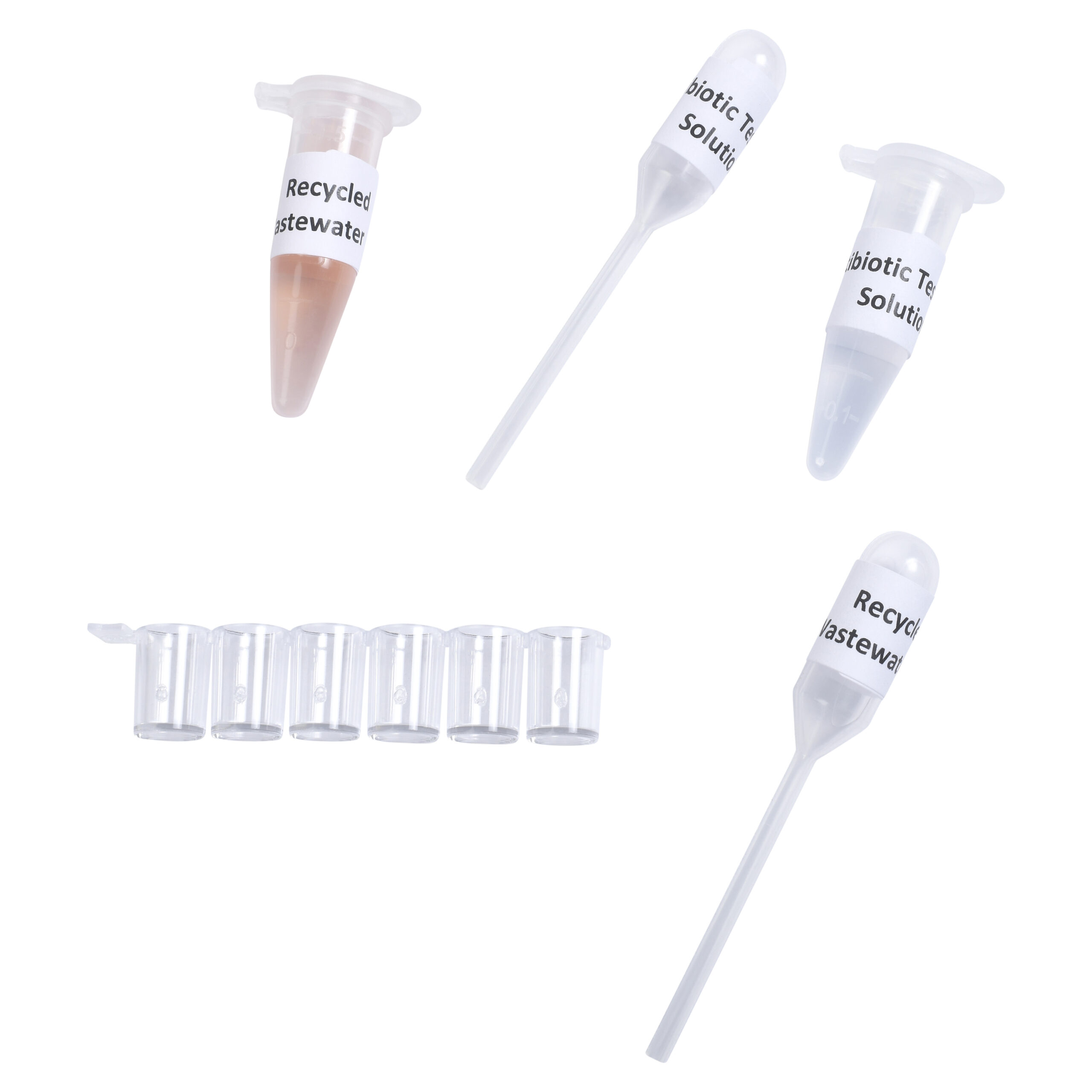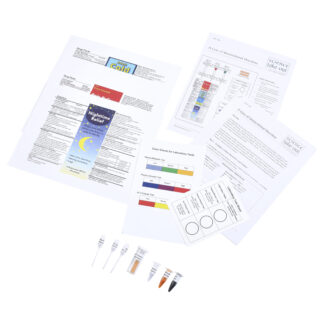Antibiotic-Resistant Bacteria and Recycled Water
$14.95 – $100.95
Antibiotics in wastewater may lead to multi drug-resistant bacteria.
Are antibiotic resistance genes in recycled water a threat to human health?
- Test for the presence of antibiotic resistance genes in the water leaving a wastewater treatment plant.
- Interpret graphics that illustrate how bacteria can become resistant to multiple antibiotics.
- Explain how the presence of antibiotics in wastewater might lead to the evolution of multi-drug resistant bacteria (“superbugs”).
Kit Includes
- Instructions for Antibiotic Resistance Gene Test Kit
- Well strip for antibiotic resistance gene tests
- Recycled wastewater (simulated) and dropper
- Flowchart: Fairfield Wastewater Treatment System
- How Bacteria Acquire Antibiotic Resistance Genes
- Natural Selection of Antibiotic-Resistant Bacteria
- Testing Wastewater for Antibiotics sheet
- Antibiotic Test Solution (simulated) and dropper
Quantity Discounts
Kits:
- 1 – 9 kits: $14.95 each
- 10 – 24 kits: $14.20 each
- 25+ kits: $13.46 each
Unassembled:
- 1 – 9 packs: $100.95 each
- 10+ packs: $95.90 each
Refills:
- 1 – 9 packs: $37.95 each
- 10+ packs: $36.05 each
Correlation to Next Generation Science Standards (NGSS) Shop by NGSS »
Performance Expectations:
HS-LS4-4. Construct an explanation based on evidence for how natural selection leads to adaptation of populations.
HS-LS4-2. Construct an explanation based on evidence that the process of evolution primarily results from four factors: (1) the potential for a species to increase in number, (2) the heritable genetic variation of individuals in a species due to mutation and sexual reproduction, (3) competition for limited resources, and (4) the proliferation of those organisms that are better able to survive and reproduce in the environment.
Science & Engineering Practices
Constructing Explanations - Construct an explanation based on valid and reliable evidence obtained from a variety of sources (including students’ own investigations, models, theories, simulations, peer review) and the assumption that theories and laws that describe the natural world operate today as they did in the past and will continue to do so in the future.
Disciplinary Core Ideas
LS4.B: Natural Selection - Natural selection occurs only if there is both (1) variation in the genetic information between organisms in a population and (2) variation in the expression of that genetic information—that is, trait variation—that leads to differences in performance among individuals.
LS4.C: Adaptation - Evolution is a consequence of the interaction of four factors: (1) the potential for a species to increase in number, (2) the genetic variation of individuals in a species due to mutation and sexual reproduction, (3) competition for an environment’s limited supply of the resources that individuals need in order to survive and reproduce, and (4) the ensuing proliferation of those organisms that are better able to survive and reproduce in that environment.
- Natural selection leads to adaptation, that is, to a population dominated by organisms that are anatomically, behaviorally, and physiologically well suited to survive and reproduce in a specific environment. That is, the differential survival and reproduction of organisms in a population that have an advantageous heritable trait leads to an increase in the proportion of individuals in future generations that have the trait and to a decrease in the proportion of individuals that do not.
Crosscutting Concepts
Cause and Effect - Empirical evidence is required to differentiate between cause and correlation and make claims about specific causes and effects.





